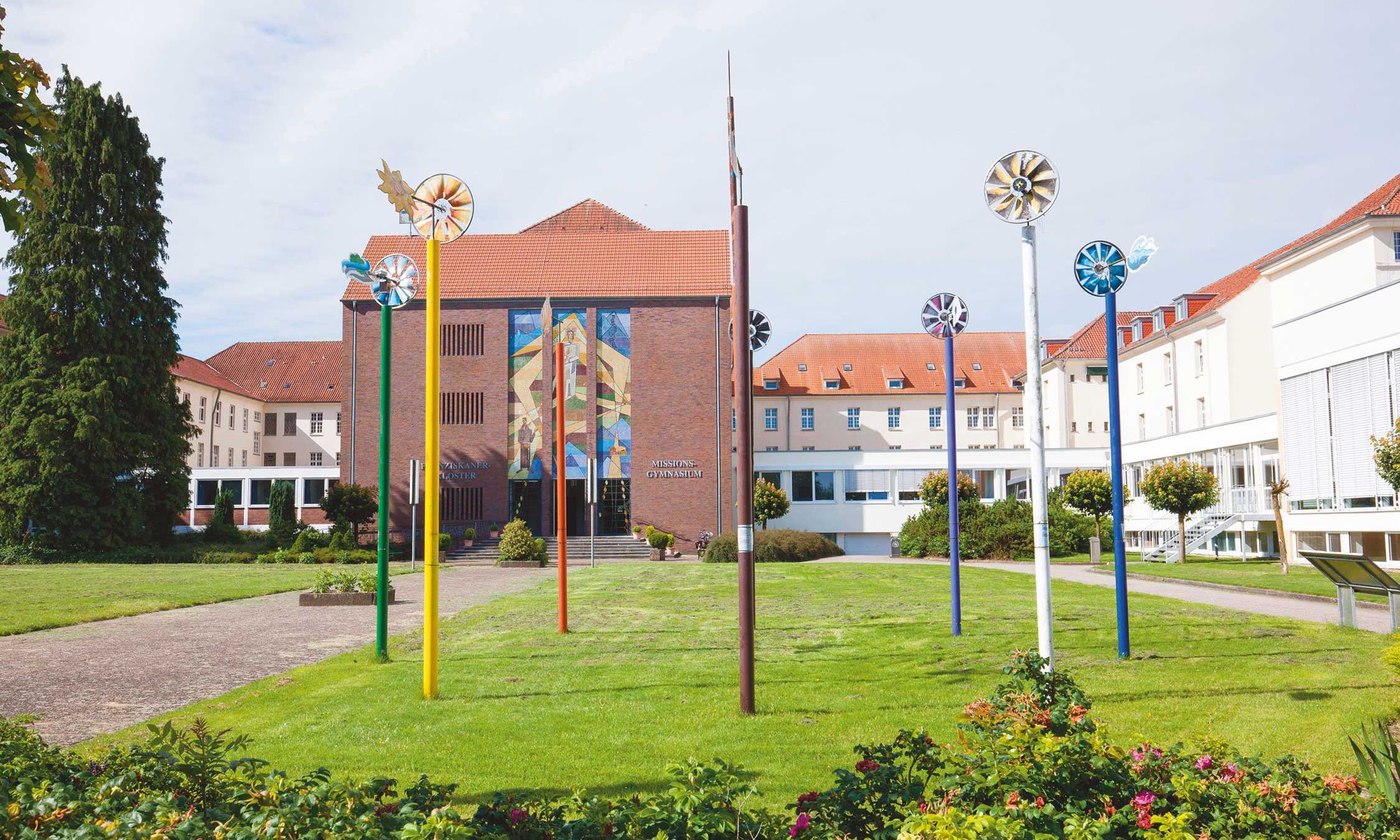Bardel Bad Bentheim Franciscan monastery, which has a museum housing a collection of 600 artefacts brought back from Brazil, is co-operating with the cataloguing project
Photo: Hans Zaglitsch
Germany’s monasteries and convents are beginning to investigate collections of objects brought home by missionaries overseas during the colonial era with assistance from a church project that aims to help them produce inventories, conduct provenance research and eventually, if appropriate, return objects to the countries of origin.
The project, Historic Mission Collections, is based at the mission research institute at the Sankt Georgen college of theology and philosophy in south-western Germany. It arose in part in the context of a wider debate about museum collections acquired in the colonial era.
But maintaining collections is also a concern for some of the religious communities affected, says Markus Scholz, an anthropologist and historian working on the project. An initial survey looked at the collections of around 50 Catholic communities. In the case of more than half of these, no inventory has so far been compiled, Scholz says.
“Some are well conserved and on display in museums but there are also collections that are in storage,” Scholz says. “Religious communities face dwindling resources, both financial and in terms of personnel. Taking care of collections is difficult.”
Many of these objects originate from German colonies, but not all; German missions were also active in the colonies of other European powers and in independent countries. Mission collections contain artefacts and specimens from Africa, Asia and South America.
The circumstances under which items were acquired varied enormously, Scholz says. “Objects were found, given, exchanged, bought and sometimes acquired under circumstances in which missionaries took advantage of the asymmetric power relations that characterised the colonial context,” he says. Missionaries also commissioned objects from local craftsmen, he adds.
“Some collections date back to the 18th century, when missionaries brought back natural specimens with the intention of explaining to future missionaries what they should expect in the countries when they arrive there,” Scholz says. “In the late 19th century, the objects served more of a promotional purpose: religious communities displayed them so that interested visitors could marvel at objects from faraway countries and exhibitions became widespread.”
Some objects were brought back much later; additions were made to collections as late as the mid-20th century, says Markus Luber, the head of the Sankt Georgen Institute for Global Church and Mission research centre. Missionaries collected somewhat haphazardly, he says; in some cases, they began collecting botanical or insect specimens, craftwork or art as a hobby, and then brought them back to Germany. “With some notable exceptions, most missionaries were not experts in ethnology and a lot of collections came together quite randomly,” Luber says.
Scholz says he is optimistic that the provenance of many of the objects involved can be traced thanks to an extensive archive of surviving documents. “There are a lot of written sources,” he says. “Missionaries corresponded a great deal, and there were also mission newspapers.”
The Franciscan monastery Bardel Bad Bentheim is among the religious communities co-operating with the Historic Missions Collections project. The monastery houses a museum containing around 600 objects brought back from Brazil since the mission there was founded in 1922. Franciscan monks from Bardel are still active in the north-east of Brazil and in the Amazon region.
The museum’s collection includes Brazilian folk art and indigenous handicraft, and an array of natural specimens such as snails, seashells, mineral samples and butterflies and insects, says Father Wilhelm Ruhe, who lives in the monastery. One of its prize objects is a feathered decoration originating from the Munduruku people of the Amazon River basin; another is a drum made from a hollowed tree trunk.
“We don’t yet know much about the provenance of individual objects,” Ruhe says. The monastery intends to “create a professional inventory and documentation” with the help of the Historic Mission Collections project, he says.
“When we have the results, we can think about what should happen to the objects,” he adds. “We would like to keep the museum here and perhaps create a new exhibition with outside assistance, but if there is interest in Brazil for specific objects, perhaps this would be a good opportunity to discuss these things in a global church dialogue, and possibly return pieces to Brazil.”
Luber’s first priority is to ensure that the Historic Mission Collections project can be financially sustained. Its initial funding was provided by the religious orders themselves and the Catholic organisation Justitia et Pax, he says—but for now, the funding is only secure for another year.
“We are looking at how we can continue this project,” Luber says. “Everyone agrees that it is very important, but when it comes to funding it for the long term, it is difficult. The financing for the long term is not secured.”

